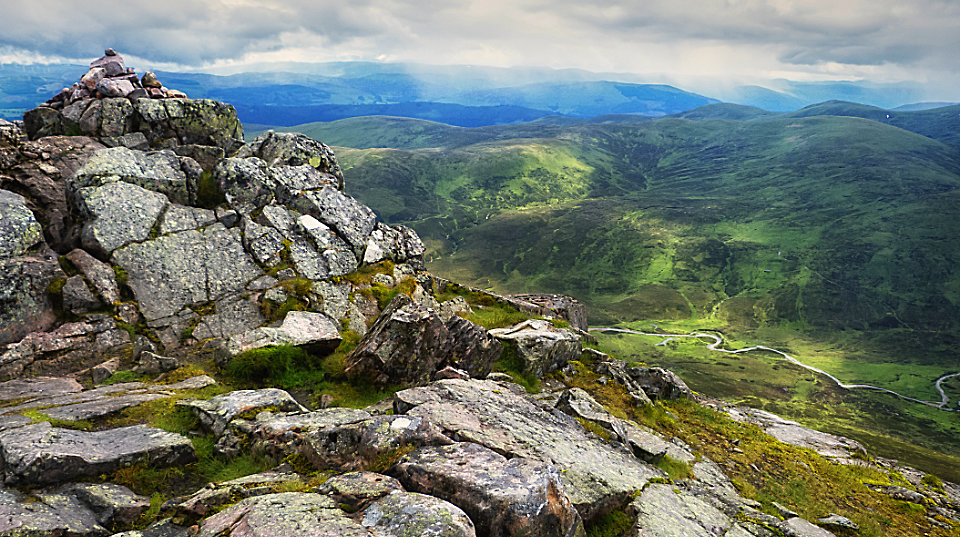
Our aim here is to understand wonder as a texture of the complete stance.
In wonder, you perceive nebulosity and pattern simultaneously, and impose neither meaningfulness or meaninglessness. (That’s what “the complete stance” means.) We’ll look at what wonder is, what it implies, and what its value may be. And we’ll discuss how to cultivate wonder as a method for adopting, maintaining, and stabilizing the complete stance; and as a prerequisite for other textures such as curiosity, play, and creation.
Awe, wonder, nebulosity, and pattern
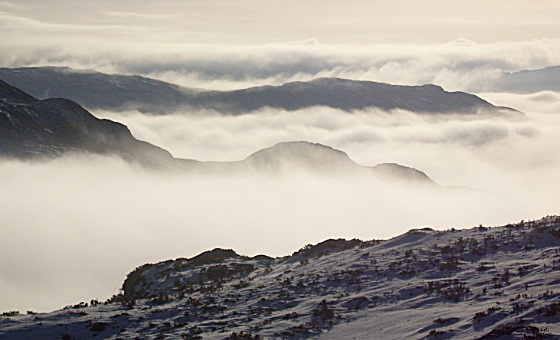
Recall that a good way to understand the complete stance is by comparison with peak experiences. That works here:
Wonder is to the complete stance as awe is to peak experiences.
So what is awe? An influential psychological study found that it consists of perceiving overwhelmingness plus incomprehensibility.1 It can be experienced as either ecstatic or terrifying, depending on whether the vastness, the overwhelmingness, seems threatening. The emotional intensity of awe motivates you to make sense of the experience; to expand your horizons to admit its meaning. That is what gives peak experiences their transformational power.2
I suggest that wonder occurs in heightened agendaless attention combined with suspension of habitual interpretation. Heightened agendaless attention allows and perceives unexpected patterning; suspension of habitual interpretation allows and perceives unexpected nebulosity. This is what makes it a texture of the complete stance: recall that the stance consists in recognizing pattern and nebulosity inseparably.
“Agendaless attention” means that you are not looking or listening for anything in particular. Wonder is not wondering. Instead, you appreciate the vividness of pattern, the fascinating richness. That is what draws and heightens your attention. Wonder appreciates phenomena just as they are, for their own sake, not for some external value. It is a non-instrumental attitude. (We’ll come back to this as a major theme in the play page, and then again in the complete stance for purpose.)
“Habitual interpretation” is the usually-automatic, unthinking, barely noticed, nearly-instantaneous perceptual process that assigns meanings to phenomena, or dismisses them as meaningless. Eternalism is hard to overcome because we normally see meanings, as if they were objectively given.3 We see vomit on the sidewalk as revolting, a smile as flirtatious, a bit of fluff on the carpet as meaningless. Suspending interpretation means allowing meaningness: neither imposing nor opposing meaning; leaving it alone as it is, not messing with it. Wonder grants instant freedom from metaphysical confusions: not because you resolve them conceptually, but because you have set aside their implications.
Now we can understand awe more precisely: as forced wonder. Overwhelmingness compels attention, and makes it agendaless by eliminating any possibility of effective action. Incomprehensibility makes habitual interpretations impossible. Thus, in awe it is impossible not to perceive pattern and nebulosity simultaneously.
As this page progresses, we’ll see ways wonder differs from awe in terms of the points of contrast between the complete stance and peak experiences:4
- Awe is rare—because overwhelming, incomprehensible situations are usually dangerous, or else soon become overly familiar. Wonder can occur frequently.
- Awe’s overwhelming emotions and its incomprehension prevent conceptual thought. It can be stupefying as it occurs, though it may motivate subsequent work at understanding. Wonder may involve intricate conceptual thinking (or not).
- Wonder can be quite quiet, so it may even go unnoticed.
- Wonder, unlike awe, can be practiced as a deliberate method.
- Wonder enables gradual transformation, rather than sudden radical rebirth.
Everyday wonder
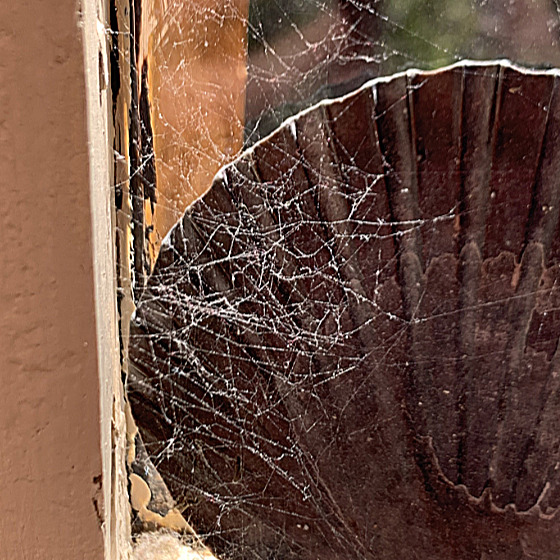
Wonder is a natural way of being. It’s not esoteric or special. You may often adopt it briefly, without even noticing—if you don’t recognize its significance, and don’t know what to look for.
Let’s do an example. There’s a black scallop shell in the corner of my window. I noticed, from across the room, the sun glinting on the web a spider had built across it. There was a moment of revulsion at the mess—but, without thinking, I suspended that habitual interpretation.
Unexpected beauty had captured my attention. Walking across to the window, spots of dust stuck to strands of the web were glittering. (I’m afraid the photo does not accurately show the effect, due to camera limitations. Maybe you can supply the gleam from memories of similar scenes.)
Like stars in the night sky. I stopped and just looked, enjoying their brilliance, for perhaps a second or less.
It occurred to me then that the bejeweled spider-strands looked like galaxy filaments, the largest known structures in the universe.
Wonder is intrinsic, non-referential; it involves no external purpose. In the moment, none of this was either meaningful or meaningless. Not the visual activity of my eyes moving from point to point, not the feeling of unexpected enjoyment, not the conceptual analogy between dust motes and galaxies. These were just present, as-they-were—because my heightened attention was agendaless.
If I had not been writing about wonder, I would have left them there. The entire event took only seconds, and I would immediately have forgotten it. Meaningfulness and meaninglessness were equally irrelevant.
As wonder is a texture of the complete stance, eternalism and nihilism are both naturally opposed to it.
-
The eternalist impulse is to turn this into something special: a Meaningful Experience. A dualist eternalist might say this was a moment of grace, granted by God, revealing the majesty of His Creation. A monist eternalist might say I had a profound revelation of the unity of the Macrocosm and the Microcosm; “as above, so below.” A physics crank might invent some theory about how the cosmic web is causally similar to a spider’s.
-
The nihilist impulse is to dismiss it as obviously meaningless. Spider webs are utterly mundane and ordinary. They have nothing in common with the large-scale structure of the universe, apart from a purely coincidental and superficial visual similarity. There is, as a matter of objective fact, no meaningful connection between dust specks and galaxies. This whole thing was a straightforward cognitive error, embroidered into an emotional fantasy, in order to preserve the delusion that life has some sort of “meaning” beyond animals being wired up to maximize their evolutionary fitness.
Both these impulses terminate wonder as soon as it you notice it, inhibiting the natural process.
On the other hand, if you don’t notice wonder when it arises spontaneously, then you don’t cut it off by reflex—but maybe you don’t get much benefit from it, either.
In this case, wonder lasted perhaps three seconds. I had seen what there was to be seen. I walked away.
But it turned out that there was meaning in it after all. In wonder, there is no external purpose; but a minute later, it occurred to me to use the example here. Perhaps it will help you notice your own moments of everyday wonder.
The overview of textures explained that wonder leads to curiosity, and then to humor, and play, and enjoyment, and creation. I hope you can see how each of those contributed to the writing of this little story.
Feelings of wonder
All stances have thinking, feeling, and activity aspects, which pervade their textures. The previous section explained wonder’s activity aspect, consisting just of heightened attention and the suspension (non-activity!5) of interpretation. Here I’ll cover feelings typical of wonder; then we’ll do thinking in the next section.
Spaciousness is the feeling of release from the bounds of fixed meaning.
Fixed meanings are claustrophobic. “Ugh, dirty, and I’m stuck in a house6 full of spiders, they’re creepy, maybe poisonous, I don’t want to have to clean this up, it’s a hassle, I don’t have time for it, I have other stupid stuff I have to do.” All that in a fraction of a second: not as thoughts articulated in words, but as the overall, oppressive gestalt of the encounter.
The routine meanings of a situation block your view of it. Habitual categorization suppresses details; it dulls the senses. I felt shut in a small box, confined in space and time and possibilities for action. But bright sunlight drew my attention sharply, my perception became agendaless, I saw vivid details I would otherwise have overlooked, and so other meanings were revealed.
Re-seeing the web as beautiful, the usual interpretations fell away. It’s not that I realized they were untrue—all my complaints were true, pretty much. It’s that they were suspended; ceased to have any relevance.
Aesthetic appreciation, fascination with beauty in its intricate specificity, typically accompanies wonder. Heightened agendaless attention can perceive the unexpected, which reveals freshness: whatever you see, hear, smell, taste or touch is unique, not merely another instance of a familiar category. Wonder is almost synonymous with amazement, astonishment, and perplexity. Reality is a delicious surprise. Not a surprise as in “maybe this will happen, or maybe that, but I expect this”—and then you get that. Surprise as in “I couldn’t have imagined this beforehand.”
Wonder is the feeling of accepting contact with nebulosity. Wonder requires willingness to allow chaos, uncertainty, ambiguity, discontinuity, meaninglessness.
Wonder is ambivalent. In wonder, there are no set boundaries, and the world opens up into vastness. That can come as a release and a relief; or you may feel agoraphobia. You realize nothing is altogether solid, and that groundlessness provokes vertigo. If eternalism or nihilism is habitual, wonder’s open-endedness—its non-confirmation of your stance toward meaning—seems threatening.7 That’s why there’s an immediate urge to shut it down by insisting that whatever is happening is either meaningful or meaningless, rather than letting it be.
The confused stances are defenses against the anxiety of nebulosity. Stabilizing the complete stance involves learning from practice how and when you can tolerate it—or enjoy it.
That is the cost of freedom. It is the exit toll you pay for stepping out of a musty, dingy box into a bigger, brighter, stranger world. It is the price for freshness, appreciation, and insight. Wonder is the prerequisite too for curiosity, humor, play, enjoyment, and creation; they rest on clouds. They are often joyful, but inevitably also sometimes queasy.
Wonder and insight
Studies of awe have found that it can be provoked by conceptual vastness, just as by perceptual vastness. Encountering an overwhelmingly powerful, initially incomprehensible intellectual system can blow you away.8 You recognize that its vast sweep implies you will be forced to reevaluate much of what you thought you understood—which might radically change how you think, feel, and act—but specifically what requires revision is obscure until you have assimilated it.
Let’s call the analog of conceptual awe “intellectual wonder.” As a response to incomprehensibility, we can contrast it with wondering and with bafflement. Wondering has a specific question in mind, and expects a specific form of answer. (I’ll call this “closed-ended curiosity” on the next page.) It may involve heightened attention, but does not suspend habitual interpretations. Bafflement is the inability to even get started on making sense. Familiar meanings are suspended because they’re obviously irrelevant, but you cannot bring conceptual attention to bear, so you are incurious. Intellectual wonder recognizes that your existing systems of meaning cannot encompass the new one, so you must suspend your usual ways of thinking. Simultaneously, the new one is fascinating, so it draws your attention to its intricate details; but you don’t yet know what to attend to, so it is agendaless. (This leads naturally to “open-ended curiosity,” which is similar, but more active, directed.)
Suspending interpretation gives space for unexpected alternative meanings to emerge. That is insight.
Understanding gained from wonder is nebulous, especially initially. The complete stance recognizes that all understanding is nebulous—whereas complete understanding is a false promise of eternalism. However, the new meanings emerging in wonder should later be tested and reconciled with one’s other, more solid understandings. Apparent insights may be productive, or not. The spider web/cosmic web analogy was spurious and unproductive (other than for its use here). A famously valuable example was August Kekulé’s breakthrough understanding of the chemical structure of benzene in a dream of the ouroboros—a snake biting its own tail.9
Insight opens new possibilities for action: alternative responses to situations and feelings. This points the way into the more active textures of the complete stance. You are freed for curiosity, play, and creation.
Wonder as a method
To the extent that you have stabilized the complete stance, its six textures often occur naturally and effortlessly. Short of that, the textures can also be used as methods for adopting and stabilizing it.
Wonder is the most receptive, least active texture, so it’s harder to apply deliberately than the others. You can’t just say “right, I’ll do an hour’s worth of wonder now, and then have lunch.” (Or anyway I can’t!)
That there is no specific method for producing wonder may contribute to the misleading and counterproductive sense of specialness around it. It helps to consider it no big deal; something to enjoy when it occurs, but not something to try to hold onto, crank up artificially, or make a fuss about after the fact.
On the other hand, wonder is not a subjective experience;10 it’s not something that just happens to you, like awe. It does have subtle doing components: attention and suspension.
The circumstances conducive for awe may also produce wonder. Going to a concert just in order to find wonder might be slightly silly (or not!). But if you are going to one anyway, you could maintain background awareness that wonder (or awe) might occur, and intend to notice and allow it if it does.
So in fact the method for wonder is: wonder at wonder! Recall that wonder is heightened agendaless attention plus suspension of interpretation. When wonder occurs, maintain heightened agendaless attention to attention itself, and suspend interpretation of suspended interpretation. Attention to attention intensifies wonder. Suspension of interpretation of interpretation allows it to persist. (If you think “oh, yes, I seem to have suspended interpretation, so this must be wonder, which means I’m adopting the complete stance, so the next thing is, I have to figure out what ‘the inseparability of nebulosity and pattern’ is supposed to mean”—then the moment is lost, and wonder collapses into a fixed system of conceptual interpretation you read about on some website.)
Noticing wonder requires knowing what it is like: the associated thoughts, feelings, and (in)actions. I hope this page gives a preliminary, conceptual sense of that. Practice develops a non-conceptual familiarity, which is more reliable.
Many meditation methods that aim at “emptiness”—nebulosity, roughly—train you to suspend interpretation. These do seem to facilitate wonder. It is possible to decide to suspend interpretation for an hour before lunch.
There are meditation methods that train you in heightened attention—including, in some cases, attention to attention. However, nearly all aim at single-pointed focus for a particular purpose. I do not know of one that specifically trains you in the agendaless attention that wanders about according to its evolving fascinations.11 The poet Robert Bly recommends training in art appreciation for this purpose; he describes it as “sharpening the senses by labor.”
An experiment in wonder
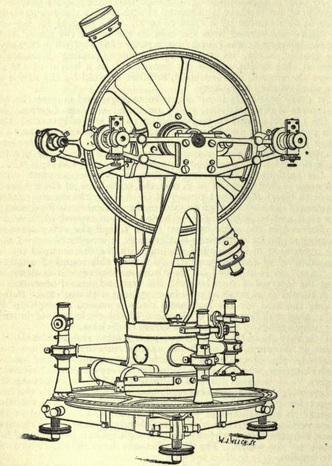
Want to do an experiment?
I’ll tell you a story that gave me a moment of intellectual wonder. It may or may not for you!
What I suggest is that, as you read it, you maintain awareness of the possibility of noticing heightened, agendaless, conceptual attention, and the possibility of suspending of your usual understanding. At a certain point in the story, you may notice a slightly uncanny frisson of disorientation. Then, metaphorically, your ears may suddenly prick up—you may find yourself fascinated. Your mind may dart in all directions looking for answers, or you may want to read on as quickly as possible. I suggest instead that you stop for a moment then, and pay attention to the feelings, and what you are thinking, and what you are wanting to do. Then proceed slowly, dividing your attention between the story and watching your own attention and interpretation. And allow the story to not make sense for a moment, but do not attempt to make your allowing incomprehension to mean anything itself.
In 1765, surveyor Jeremiah Dixon and astronomer Charles Mason of the Royal Observatory in Greenwich, England, set out to survey the Pennsylvania-Maryland border—later known as the Mason-Dixon Line. It took two years to mark the boundary across 233 miles. Through uninhabited wilderness, dense forests, hostile Indian territory, up and down mountains, they made painstaking observations using delicate, state-of-the-art scientific instruments. Mason’s astronomical career was devoted to the most pressing technological challenge of the time: accurately determining one’s geographical position, especially when at sea. The best method involved using a highly accurate clock and fancy telescopes, which they brought.
The boundary was legally defined as running due west from a specific point, so for the survey it was mainly important to get the latitude—the north/south coordinate—right. For this, Mason and Dixon used a zenith sector. That was a six-foot telescope mounted on a wheel, like in the picture above. Tick marks on the wheel told them the telescope’s angle from straight up. The wheel was mounted on a tripod that they adjusted to verticality using a plumb bob—a weight on a string that points straight down. By locating stars in the telescope, checking their angles from the vertical, and consulting tables that said where they should appear at what time of night, they could determine their position. As a simplified example, as you go north, the pole star appears to move higher above the horizon, and closer to the zenith—the point in the sky directly above you.
From first principles, they calculated that their position error should not be more than fifty feet. Yet over the course of the survey, they repeatedly found anomalies of several hundred feet. They attributed this to imprecision in the instruments, which they corrected by taking multiple measurements and averaging. Or so they thought! But they were wrong. In fact, the line they laid out does repeatedly veer hundreds of feet off from straight east-west.12 And not at random…
When Mason got back to Greenwich, his boss, the Astronomer Royal Nevil Maskelyne, suspected a different explanation. Newton’s theory of gravitation had been thoroughly confirmed as applying to planets. In principle, it was supposed to apply to any sufficiently large object, but there was no evidence for this. However, physicists had calculated that it should be just barely possible to measure the gravitational force exerted by a mountain using instruments as precise as were then available. Maskelyne guessed that the anomalies Mason and Dixon noted were due partly to the Allegheny Ranges, which they repeatedly crossed. Mountains to the immediate north or south of their path had sucked the plumb bob sideways, toward themselves. That threw off the verticality of the azimuth sector, which did not point straight up as it should.
In 1772, Maskelyne submitted a funding proposal to test the hypothesis.13 Money came through in 1773, and Maskelyne put Mason on the job of finding a suitable mass. Mason chose Schiehallion, an isolated Scottish peak whose nearly-symmetrical conical shape would simplify calculations. Using a ten-foot azimuth sector, Maskelyne confirmed that the mountain did deflect the plumb-bob. This was a spectacular confirmation of Newtonian gravitation. The amount of the deflection, together with the measured geometry of the peak, made it possible to calculate the ratio of the density of mountain rock (which was known) with that of the earth as a whole. This was approximately 5/9. Maskelyne’s colleague Charles Hutton correctly conjectured from this that implied our planet has a metallic core—metals such as iron being much denser than rock.
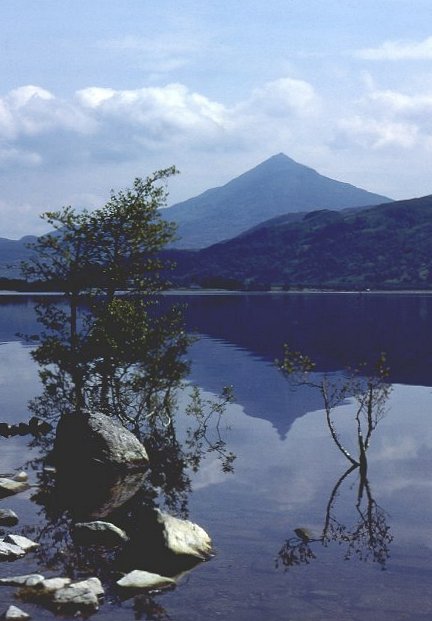
How did that go for you?
It was a shock for me, learning that the gravitational pull of mountains is so powerful that it got Mason and Dixon hundreds of feet off course. I felt both delight and vertigo, which stopped my mind for a moment. And then learning that Maskelyne could measure this accurately enough with 1770s instruments to get the density of the earth correct to within 20% was another shock. And that earth’s iron core was discovered then…
In elation and vertigo, my curiosity piqued me. These were surprises of the “never would have imagined” sort.14 What else might I be wrong about, if my understanding of gravity and of technological history were so wrong? I spent an entire day reading to find out.
Further reading and further research
My main sources for this page were spider webs and mountain ranges. In other words, it’s based largely on experience.
However, my understanding is rooted in Vajrayana Buddhist theory and practice. “Spacious freedom” is my somewhat idiosyncratic presentation of relevant theory. Roaring Silence, by Ngakpa Chögyam and Khandro Déchen, is a guide to the most relevant introductory meditation practices.
This is at least the third time I’ve tried to write about agendaless perception and suspension of interpretation—although I haven’t used exactly those terms before. Reading the previous two attempts may deepen your understanding by coming at the topic from different angles. “At the Mountains of Meaningness” (2015) is about peak experiences and experiences on literal peaks; about vastness; about the wonder, inspiration, and insight found there; and about the nebulosity of perception, concepts, and action. The “Reopening the senses” section of “Hunting the Shadow” (2017) is about “liberated perception,” which is “discovered through precision,” “in nature, and through art, and especially art that is about perception in nature.”
After mostly finishing this page, I thought I ought to check the academic literature, and found work that was surprisingly interesting. I’ll pass along a bit of what I learned, with citations in case they inspire you to follow up. Also, at the end of this appendix, I’ll suggest a possible line for further research.
“Spaciousness” seems closely related to “openness to experience,” considered one of the five fundamental factors of personality in current empirical research. Studies have found openness correlating with the terms I’ve used for each of the six textures of the complete stance.15
Earlier I footnoted Dacher Keltner and Jonathan Haidt’s “Approaching awe, a moral, spiritual, and aesthetic emotion,” Cognition and Emotion, 2003, 17(2), pp. 297-314. This is now the classic work on the topic; I took the definition of awe as overwhelmingness plus incomprehensibility from it.16 I also learned from Brent Dean Robbins’ “Joy, Awe, Gratitude and Compassion: Common Ground in a Will-to-Openness,” presented at the conference Works of Love: Religious and Scientific Perspectives on Altruism, 2003.
This lecture by Brian Cantwell Smith is titled “Deference, Humility, and Awe.” It’s mostly not relevant to this page, but he packs about twenty serious, far-reaching, out-of-consensus points into an hour’s talk, any one of which a lesser academic could have made a career out of, so I recommend it highly. He does make the point that you can experience awe entirely within the conceptual domain; he uses the examples of first encountering Gödel’s and Turing’s work on impossible knowledge.
The methods used in classic studies on awe and peak experience would probably no longer pass muster. Researchers basically asked people to tell stories about their memories of long-ago experiences, and looked for commonalities. In the wake of the psychology replication crisis, I suspect this would no longer count as “science.”
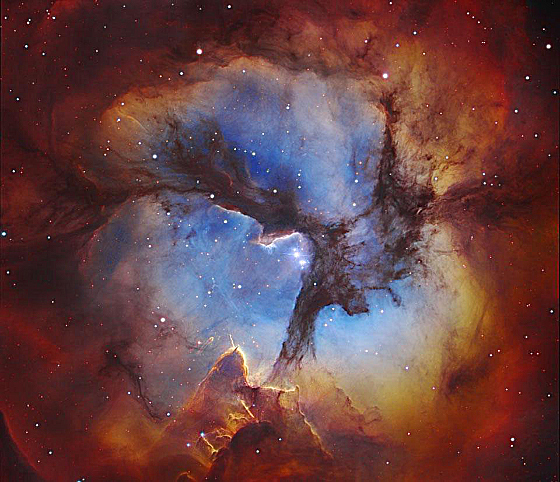
However, more recent research purports to induce awe in the laboratory. The first such study showed people a series of outer space images, played them Sigur Rós’ Hoppípolla, “a song with qualities known to evoke awe,” and asked them how they felt about them. (Paul J. Silvia, et al., “Openness to Experience and Awe in Response to Nature and Music,” Psychology of Aesthetics, Creativity, and the Arts, 9(4) (2015), pp. 376–384.) The main finding was that openness to experience correlated strongly with self-reports of “awe-like” emotions.
More convincingly, Alice Chirico and her collaborators have used virtual reality (VR) headsets to induce awe, measured physiologically (pulse, skin conductance) as well as by self-report. (Alice Chirico et al., “Effectiveness of Immersive Videos in Inducing Awe,” Scientific Reports 7, 1218 (2017).) They subsequently used computer graphics and virtual reality to create immersive experiences that can manipulate differing aspects of awe—such as “overwhelmingness” and “incomprehensibility”—separately. (Alice Chirico et al., “Designing Awe in Virtual Reality,” Frontiers in Psychology 8 (2018) 2351.) Another study found that VR-induced awe increases a standard measure of creativity (Alice Chirico, et al., “Awe Enhances Creative Thinking,” Creativity Research Journal, 30:2, 123-131 (2018)).17
I’ve been wondering whether the distinction between wonder and awe could be validated experimentally. I expect inducing wonder in VR is also feasible. (Even my favorite 2D video games seem to do that for me.) How could we verify which is which? One way might be through visual psychophysics: objective measures of what people are looking at and what they see, using for example gaze-tracking cameras and reaction time tests.
My understanding of agendaless perception draws on my understanding of perception with an agenda, which was a main topic of my work in artificial intelligence. In a well-practiced task, you know what to look for where, because you know what the things you see mean. This can be verified with gaze tracking: experimental subjects focus their attention tightly in predictable, task-relevant places.
In awe and wonder, your routine methods for visual interpretation break down, and you don’t know what to look at. In awe, you are “blown away,” and my guess (based on introspective memory) was that your attention widens to take in the vastness of the entire scene, without looking at anything in particular. I discovered as I was finishing this page that this has just been verified experimentally by Muge Erol and Arien Mack (“Immersive experience of awe increases the scope of visuospatial attention: A VR study,” Journal of Vision September 2019, Vol.19, 285a).
My prediction is that wonder engenders significantly greater visual exploration (as could be measured by gaze tracking), and tighter focus (as could be measured using the methods of Erol and Mack), than awe. However, I would expect the gaze to fixate on inherently salient visual features, rather than task-relevant ones. (Inherent salience is well-understood in visual psychophysics.)
- 1.This is Dacher Keltner and Jonathan Haidt, “Approaching awe, a moral, spiritual, and aesthetic emotion,” Cognition and Emotion, 2003, 17(2), pp. 297-314. The paper gives both a plausible theory and a useful literature review. Keltner and Haidt use the term “vastness” rather than “overwhelmingness,” but say that a perception of enormous power is typically involved. Rather than “incomprehension,” they use the technical term “accommodation,” meaning “the process of adjusting mental structures that cannot assimilate a new experience.” They write: “awe involves a difficulty in comprehension, along with associated feelings of confusion, surprise, and wonder.” I have found little prior literature on wonder itself.
- 2.Keltner and Haidt: “We propose that prototypical awe involves a challenge to or negation of mental structures when they fail to make sense of an experience of something vast. Such experiences can be disorienting and even frightening… They also often involve feelings of enlightenment and even rebirth, when mental structures expand to accommodate truths never before known. We stress that awe involves a need for accommodation, which may or may not be satisfied… Awe can transform people and reorient their lives, goals, and values…. Awe-inducing events may be one of the fastest and most powerful methods of personal change and growth.”
- 3.The “Meaningful perception” chapter of In the Cells of the Eggplant explains this.
- 4.My distinction between “awe” and “wonder” was a terminological choice, not necessarily an analysis of the way the words are commonly used. That is, I wanted to make a distinction, and by fiat I’ve used these two related words to do so. “Awe” and “wonder” are not clearly distinct in common usage, nor in most of the academic literature I’ve read. However, the one relevant study I’ve found (after nearly finishing writing this page) confirms the distinction I’d drawn. Relative to “awe,” “wonder” is described with fewer words implying intense positive emotion, less certainty, more cognition, more perceptual work, and more curiosity. Kathleen E. Darbor et al., “Experiencing versus contemplating: Language use during descriptions of awe and wonder,” Cognition and Emotion, ePub 2015.
- 5.Remember that I’m presenting the textures in order from wonder, which is the least active, to creation, the most.
- 6.I’m writing this during quarantine for COVID in April 2020.
- 7.Religious awe can be terrifying—the mysterium tremendum of the numinous. The uncanny is more-or-less wonder plus anxiety. As I wrote in “We are all monsters,” “Uncanniness is the experience of conceptual interpretation breaking down. Spookiness is frightening unpredictability and alienness—mixed with familiarity. Nothing can be more familiar than ourselves; and yet there are times when we find ourselves alien, chaotic, and confusing.”
- 8.Keltner and Haidt use as examples psychoanalysis, feminism, and evolutionary theory. Each of those did blow me away when I first learned about them. YMMV.
- 9.I was disappointed to read, while researching this page, that Kekulé’s story about this insight may have been fictional or a joke.
- 10.Of course you do experience wonder, as you do any other activity, and it does have specific associated feelings, as we’ve seen. Wonder is not an experience in the same sense that washing dishes is not “an experience.”
- 11.It seems that Dzogchen ought to have a method of this sort. It is in the spirit of the Four Chog-Zhag. Maybe there is such a method, and I don’t know about it.
- 12.For gloriously more geeky details, see Robert Mentzer’s “How Mason and Dixon ran their line.”
- 13.His proposal was to the Royal Society, which formed the Committee of Attraction to decide whether it was worth spending an awful lot of money on. Benjamin Franklin was among the members of the Committee.
- 14.It’s plausible that a contributing factor is the orders of magnitude difference in size between the earth, the mountain, and the plumb bob. This conveys spatial vastness conceptually, which—just as when it is perceived visually—can often induce awe.
- 15.So you might wonder whether “the complete stance” isn’t just another term for openness to experience. It’s not. Openness can make it easier to tolerate nebulosity, but doesn’t ensure you understand accurately the many ways it interacts with pattern. Monists are typically extremely open to experience, yet monism is inimical to the complete stance. The confused stances mission and Romantic rebellion also seem, anecdotally, to correlate with openness.
- 16.Keltner and Haidt’s model is similar to several earlier ones they review. One they don’t mention is Rudolph Otto’s 1917 explanation of “the numinous” as a mystery (mysterium) that is at once terrifying (tremendum) and fascinating (fascinans).
- 17.The effect size in the creativity study data is enormous. Potentially extremely exciting, so I’d like to see it replicated.
